
Results of the competition "Chapel for the Memorial Site of Ležáky"
The architectural competition for the "Chapel for the memorial site of Ležáky" in Pardubice has already announced its winners. Last week, the organizer of the competition, the Lidice Memorial, published the results on its website.
The aim of the competition was to find the most suitable solution for the design of a new memorial chapel. The Chapel of Reconciliation is intended to provide not only a suitable place for reflection and reconciliation in the memorial site of the tragically erased settlement of Ležáky but also a dignified place for the burial of the preserved urns of the victims of the tragedy.
A total of 80 competition proposals were submitted. The jury, composed of architects, representatives of the Lidice Memorial, and the municipality of Miřetice, selected and awarded the top 3 proposals:
1st Prize - Kurtis and partners, s.r.o (Gabriel Sedlák, Vlado Hrivňák, Iveta Kolláriková, Xabier Epelde, Jan Ertl, and Jan Šebánek)
Jury evaluation:
"The jury highly valued the concept of the proposal, which successfully unifies two fundamental yet often competing ideas. These are meditation in an intimate, enclosed environment and the need for an immediate connection with the striking - dominant exterior of the former Ležáky site. The thoughtful idea connects places and events that took place in Ležáky almost metaphysically. Although the authors carefully guide the visitor through their concept (first, one is 'struck and confused' by the cramped entrance, then led down the stairs to the pre-space with descriptions of fates, and further into the space for meditation), they still leave room for associations of thoughts and such important feelings.
The jury also positively evaluated the humility of the design. Both on a scale and architectural level, the building does not draw attention to itself, but rather allows everyone to discover it. Its placement in the intimate space of the grove does not compete with the memorial site with 'grave houses'; rather, in the final phase of the pilgrimage, the visitor is once again confronted with the exterior.
The jurors anticipate that the proposal will be easily realizable, and it will be possible to further refine and hone it during the preparatory work."
2nd Prize - Platform for Urban Research and Architecture, s.r.o. (Michal Bernart, Igor Hobza, René Dlesk, collaboration: Kamila Vaníčková)
Jury evaluation:
"The chapel, through its location and views, works with the fundamental idea of a visual dominant of the original village of Ležáky and invites the replaying of scenes of terror, but also the perception of the beauty of the natural environment. Through its concept, the chapel does not compete; rather, it allows one to experience the emotions associated with this place, to pause and reflect. The presented architecture can also be further worked on and refined without leading to the demise of the concept and its fundamental idea. However, the architecture of the object is not entirely convincing. The shaping and overly complicated symbols, which may not be sufficiently readable to the visitor, detract from the strength of an otherwise very powerful idea."
3rd Prize - Ateliér Velehradský, s.r.o. (Tomáš Velehradský, Tereza Velehradská)
Jury evaluation:
"The refined aesthetic solution of the proposal is supported by relocating the new building away from the burned houses, which enhances the strong and perfect composition by Žák. Situating the new building in the line of sight from the existing footbridge adds a new significance to the entire place near a prominent solitary tree. The elegant curves of the chapel, along with the convincing graphic design of the proposal, demonstrate the high creative abilities of the authors and introduce a new aesthetic quality to the area. Conversely—and paradoxically—the location of such a significant building in the floodplain of the stream creates a fundamental obstacle for realization. Although the chapel is covered by a gentle rise, it is buried below the level of the surrounding flood-prone terrain."
The aim of the competition was to find the most suitable solution for the design of a new memorial chapel. The Chapel of Reconciliation is intended to provide not only a suitable place for reflection and reconciliation in the memorial site of the tragically erased settlement of Ležáky but also a dignified place for the burial of the preserved urns of the victims of the tragedy.
A total of 80 competition proposals were submitted. The jury, composed of architects, representatives of the Lidice Memorial, and the municipality of Miřetice, selected and awarded the top 3 proposals:
 |
Jury evaluation:
"The jury highly valued the concept of the proposal, which successfully unifies two fundamental yet often competing ideas. These are meditation in an intimate, enclosed environment and the need for an immediate connection with the striking - dominant exterior of the former Ležáky site. The thoughtful idea connects places and events that took place in Ležáky almost metaphysically. Although the authors carefully guide the visitor through their concept (first, one is 'struck and confused' by the cramped entrance, then led down the stairs to the pre-space with descriptions of fates, and further into the space for meditation), they still leave room for associations of thoughts and such important feelings.
The jury also positively evaluated the humility of the design. Both on a scale and architectural level, the building does not draw attention to itself, but rather allows everyone to discover it. Its placement in the intimate space of the grove does not compete with the memorial site with 'grave houses'; rather, in the final phase of the pilgrimage, the visitor is once again confronted with the exterior.
The jurors anticipate that the proposal will be easily realizable, and it will be possible to further refine and hone it during the preparatory work."
 |
Jury evaluation:
"The chapel, through its location and views, works with the fundamental idea of a visual dominant of the original village of Ležáky and invites the replaying of scenes of terror, but also the perception of the beauty of the natural environment. Through its concept, the chapel does not compete; rather, it allows one to experience the emotions associated with this place, to pause and reflect. The presented architecture can also be further worked on and refined without leading to the demise of the concept and its fundamental idea. However, the architecture of the object is not entirely convincing. The shaping and overly complicated symbols, which may not be sufficiently readable to the visitor, detract from the strength of an otherwise very powerful idea."
3rd Prize - Ateliér Velehradský, s.r.o. (Tomáš Velehradský, Tereza Velehradská)
Jury evaluation:
"The refined aesthetic solution of the proposal is supported by relocating the new building away from the burned houses, which enhances the strong and perfect composition by Žák. Situating the new building in the line of sight from the existing footbridge adds a new significance to the entire place near a prominent solitary tree. The elegant curves of the chapel, along with the convincing graphic design of the proposal, demonstrate the high creative abilities of the authors and introduce a new aesthetic quality to the area. Conversely—and paradoxically—the location of such a significant building in the floodplain of the stream creates a fundamental obstacle for realization. Although the chapel is covered by a gentle rise, it is buried below the level of the surrounding flood-prone terrain."
The English translation is powered by AI tool. Switch to Czech to view the original text source.
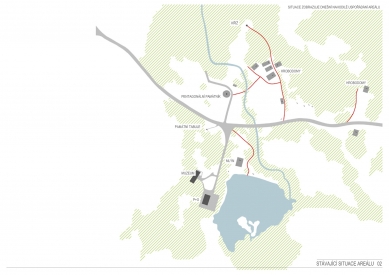
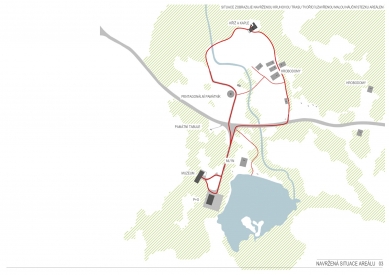
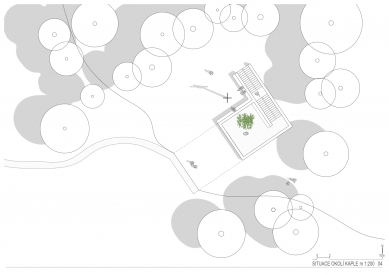
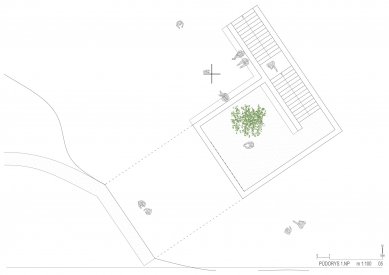
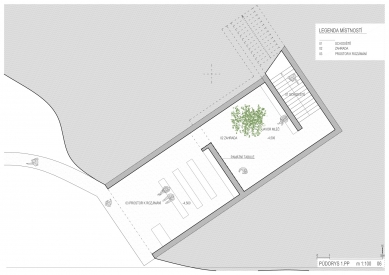

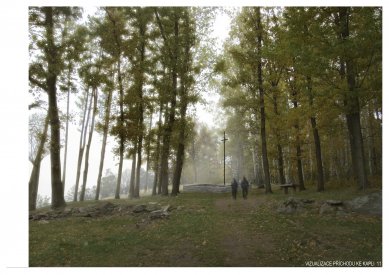
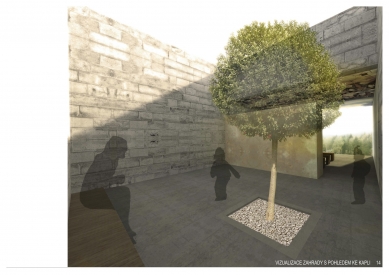
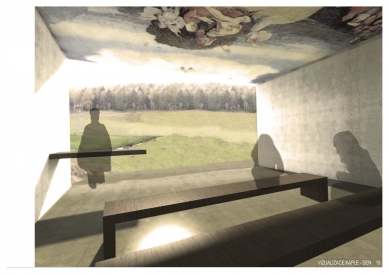
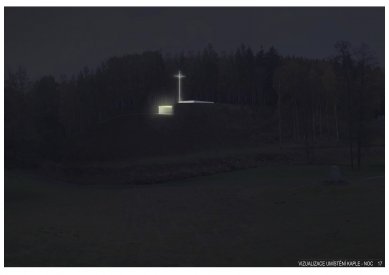
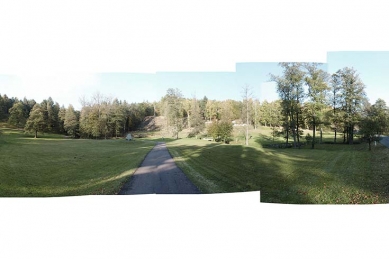
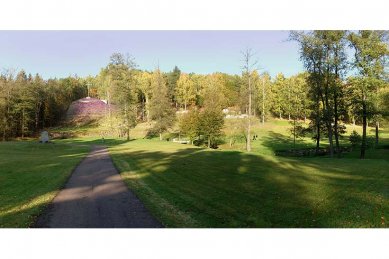
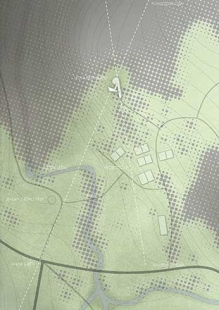
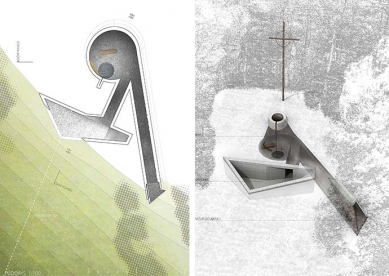
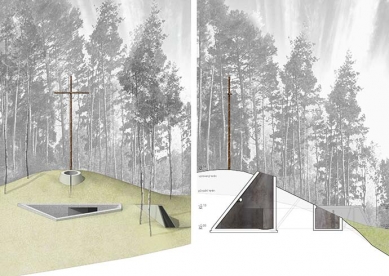
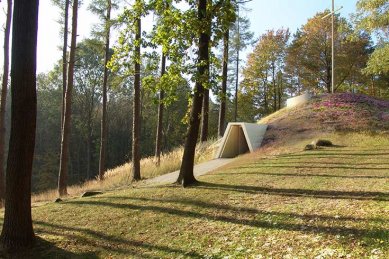
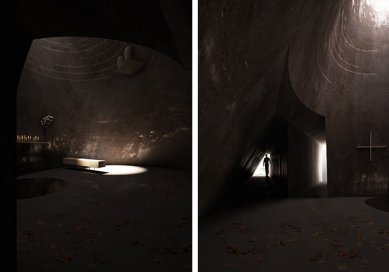
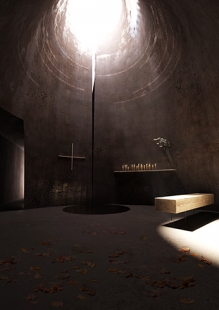
2 comments
add comment
Subject
Author
Date
Velmi zdařilé.
ing. R. Vejš
12.12.11 07:48
Velmi zdařilé ano, ale....
Lubomír Hruška
28.12.11 11:18
show all comments
Related articles
0
05.01.2018 | The exhibition in the Lidice house recalls the construction of the new Lidice
0
03.01.2018 | The Lidice Memorial had a record attendance last year, including Ležáky and Let
0
07.04.2014 | The authorities are preparing the ground for the expropriation of land in the Ležáky memorial
10
29.03.2012 | „Chapel for the Memorial Site Ležáky“ – report on the course of the competition
4
12.12.2011 | Ležáky, where are you walking?










